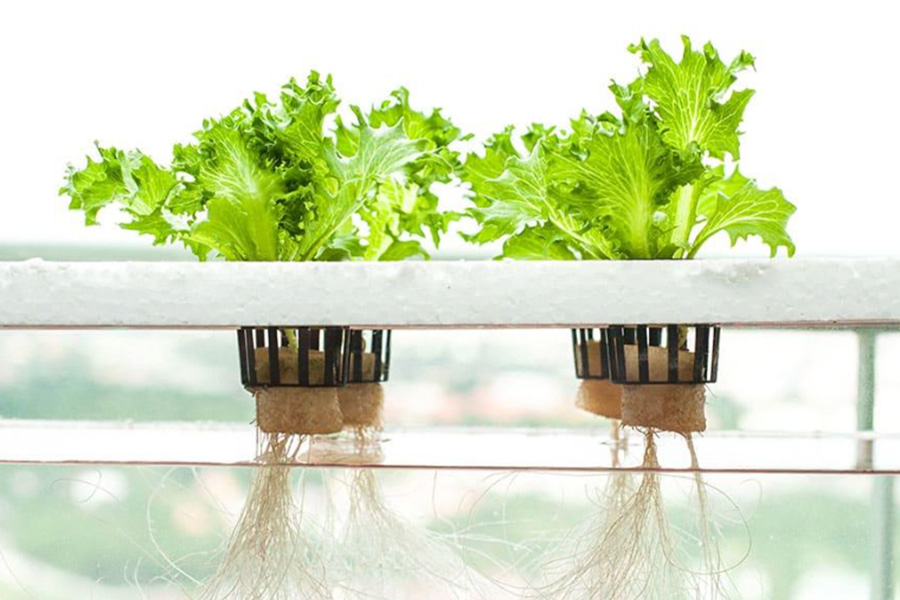Hydroponics is a specific method of growing plants without soil. Instead, hydroponics uses mineral nutrient solutions in an aqueous solvent. This technique has become more popular in the recent years due to its numerous benefits.
Hydroponics allows for efficiency, a space-saving nature, and it even improves the potential for higher yields. Here is everything you should know about this innovative technique called hydroponics.
What is Hydroponics?
The word hydroponics is derived from two Greek words – “hydro” (water) and “ponos” (labour). That best explains the essence of the technique, which involves growing plants in a water-based solution. The solution should also be nutrient-rich, to allow the direct contact with the roots.
That way, the roots also have access to oxygen, necessary for proper growth. Thanks to this, the need for soil is completely eliminated.
Even though it’s gaining more popularity now, the technique itself is very old – it dates all the way back to ancient civilisations. For instance, the Hanging Gardens of Babylon and the floating gardens of the Aztecs in Mexico are early hydroponic systems. When it comes to the modern age, the use of water-based solutions for plant growth started in the 1930s.

Hydroponic Garden Systems Types
There are six types of hydroponic systems. Nutrient Film Technique (NFT), for example, consists of a thin film of solution that goes over the roots. Deep Water Culture (DWC) has plants suspended in nutrient-rich water with submerged roots and air pump that provides oxygen.
Ebb and Flow (Flood and Drain) technique involves the nutrient solution periodically flooding the bed and draining back. With a Wick System, a wick is used to draw the solution from a reservoir to the roots. Aeroponics has roots suspended in the air and only misted with nutrient solution. Finally, the Drip System has nutrient solution dripping onto the plant’s base.
Hydroponics Advantages
The first important advantage of hydroponics is space efficiency. As they can be stacked vertically, they are ideal for urban farming and small spaces. When the plants are inside or in a greenhouse, year-round cultivation is possible.
The next advantage of this technique is water conservation. While traditional soil-based agriculture has many benefits, hydroponics is a better choice when it comes to water conservation – it uses 90{c9311e469aaad18abc8a63caea72375af245f5e814d44303695bfd942d6019a3} less water, as this solution is recirculated.
Faster growth and higher yields are also possible due to hydroponic farming. Since the plants receive nutrients directly, growth rates are much faster. Growing plants in controlled environment allows for conditions optimisation. As a result, yields are also much higher.
Indoors and greenhouse environments have another pretty big benefit – they reduce the risk of pests and diseases. As the need for pesticides is reduced, organic farming is possible. Hydroponics allow for total control over light, temperature, humidity, and nutrient levels. In an ideal environment, crop production is consistent and predictable.
Hydroponics Challenges
Finally, it’s important to note that this technique isn’t completely flawless. For instance, one significant challenge is the initial setup cost. It may be a bit pricey to invest in proper equipment, lighting, and infrastructure. However, it is a worthy investment.
Another challenge might be the technical knowledge a grower has. Hydroponics requires a little bit of understanding of plant biology, nutrient management, and system maintenance. To preserve optimal plant health, regular monitoring is crucial.
How to Start with Hydroponics?
The first step is to choose a system suitable for your needs. Consider your space, budget, and plant preferences, before making a decision. If you are a beginner, it’s always best to start with a simpler system.
Next, you should select some plants. Spinach, lettuce, and herbs are good to start with, as they are easy-to-grow. Make sure to prepare the environment by setting up some grow lights, proper ventilation, temperature control, and humidity levels.
When starting, get high-quality hydroponic solutions and adjust pH and nutrient levels regularly. Make sure to monitor the health of plants and roots. Maintaining, cleaning, and sterilising the equipment will help your hydroponic farm last long.
Conclusion
Hydroponics is a sustainable and efficient alternative to traditional soil-based agriculture. Through only a couple of steps, you could have your own hydroponic farm. Make sure to pick the right systems for your plants and enjoy the numerous benefits hydroponic technology offers.





